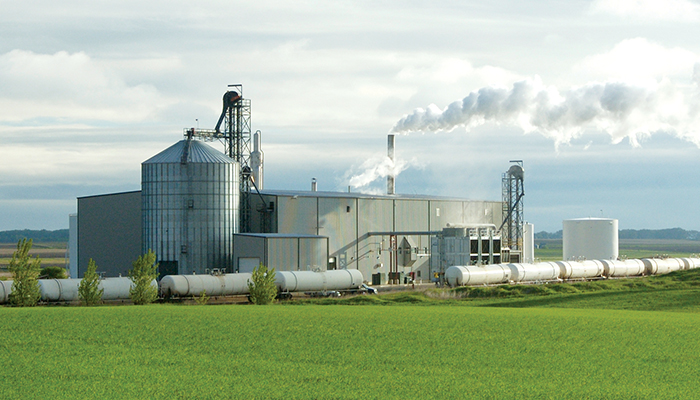All
Year-Round E15 and Small Refinery Waivers
by Ed Burke, Dennis K. Burke Inc.

These are challenging times for American farmers. Low commodity prices, plummeting RIN values, and the prospect of trade wars are taking a toll on the agriculture economy. In June, EPA Administrator Scott Pruitt spent time with farm groups and ethanol producers, reassuring them that the agency is working on allowing year-round E15 sales. He also discussed the controversial granting of small refinery waivers to the Renewable Fuel Standard (RFS).
Year-Round E15 Waivers
Earlier in June, the White House postponed a previously discussed deal that would have included year-round sales of gasoline blended with 15% ethanol. E15 use is currently restricted from June 1 to September 15, when federal law requires use of gasoline with a low Reid Vapor Pressure (RVP) to reduce emissions. Ethanol has a higher RVP than any US gasoline grade, making E15 unusable during the hotter months of the year.
Currently, gasoline blended with 10% ethanol receives a RVP waiver of 1 psi, allowing it to be sold year-round. The ethanol industry was hoping to see a similar waiver for E15.
Farm groups asked the Administrator to provide a timeline on when EPA would approve year-round sales of E15. “We stand ready to proceed,” Pruitt said. “I can’t give you a timeframe but we’re doing the work. I was encouraged to bring the parties together to help us find an answer. There is a way forward here, I feel confident the statute provides for it. We’re in a pause period, but there is a desire to do it.”
Pruitt said he’d like to see year-round E15 on a fast track for approval, but comments and rulemaking take time, so it’s not likely to happen this year.
RFS Small Refinery Waivers
Ethanol producers and farmers are upset about the number of RFS small refinery waivers granted by EPA. The agency issued more than 40 waivers in the past two years. As much as 1.6 billion gallons of ethanol blending was lost, according to one industry estimate.
Pruitt pointed out that the EPA has no choice but to grant small refinery waivers to the RFS. The statute allows for waivers to go to refiners who produce 75,000 barrels of oil or less per day. Waivers are determined facility-by-facility and evaluated jointly with the Department of Energy.
Ethanol groups argued the EPA pushed the statute too far, so they are filing lawsuits against the agency over the waiver process.
Pruitt pointed out that the agency previously only granted waivers to small refiners facing bankruptcy. A recent court ruling requires the agency to also consider economic hardship. The Administrator wanted to make it clear that the waivers are not being done to affect the renewable volume obligations (RVOs).
Pruitt said, “The ultimate solution would be to provide RIN stability.” He said the number of applications for waivers that come in is actually market-driven, noting that as RIN prices increase, the number of waiver applications also increases. Consequently, the increase in waivers granted by EPA triggered RIN prices to drop to their lowest levels since 2013. Current-year ethanol RINs have fallen nearly 70% since the start of the year. Hoping to recoup some of their losses, ethanol producers suggested that the EPA could go back and reassign the gallons lost to waivers to other refiners. Pruitt told them that, according to EPA attorneys, it couldn’t be done legally.
Pruitt said there’s a timing issue with the waiver applications. Currently, the volume obligations are set in November and waiver applications are due the following March. EPA needs to find a way to realign the waiver application deadline so they get processed before the RFS volumes are set. Then they can reallocate gallons lost to waivers.
How Viable is E15?
That’s the question most retailers face. At the moment, it looks like EPA will grant RVP waivers for year-round sales of E15 sometime before next summer.
As we’ve been hearing for years with E85, most retailers say it’s limited tank availability that’s the issue with E15.
For a good number of retail stations, adding E15 would come at the cost of removing either diesel or a premium-grade gasoline.
Does it make economic sense to sell E15? The reality is that you need healthy RIN values to make higher ethanol blends viable. The higher RIN values allow blenders and retailers to price E15 a little lower than E10 gasoline. Without the discount, consumers probably won’t be interested in the new fuel.
“The issue is, when will E15 penetrate the marketplace?” Pruitt said. “It may take three years.”
The proposed 2019 RFS volumes were released in late June. Pruitt noted that all of the biofuels volumes were to be increased, except for corn-based ethanol.
Related Posts
 Spotlight Sessions Illuminate Opportunities and Challenges
Spotlight Sessions Illuminate Opportunities and Challenges
Posted on September 19, 2025
 NEFI Testifies on RFS Changes Affecting the Heating Oil Industry
NEFI Testifies on RFS Changes Affecting the Heating Oil Industry
Posted on August 18, 2025
 From Retailer to Representative: Chris Keyser’s Road to the Vermont State House
From Retailer to Representative: Chris Keyser’s Road to the Vermont State House
Posted on June 16, 2025
 Northeast Working Group for Industry Principles Gets to Work
Northeast Working Group for Industry Principles Gets to Work
Posted on May 8, 2025
Enter your email to receive important news and article updates.
